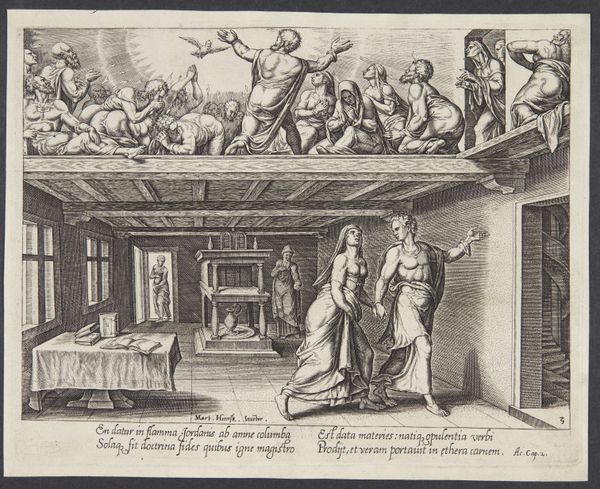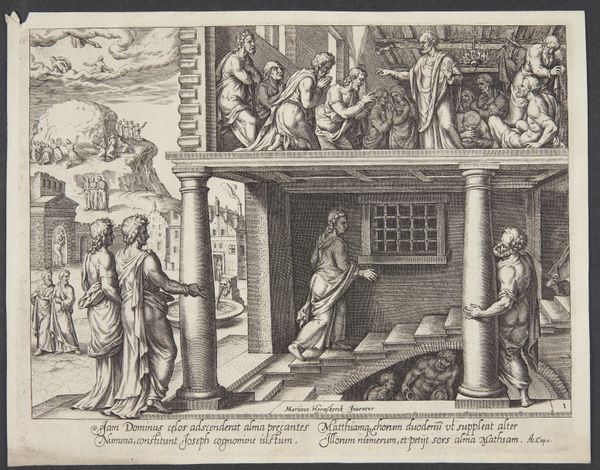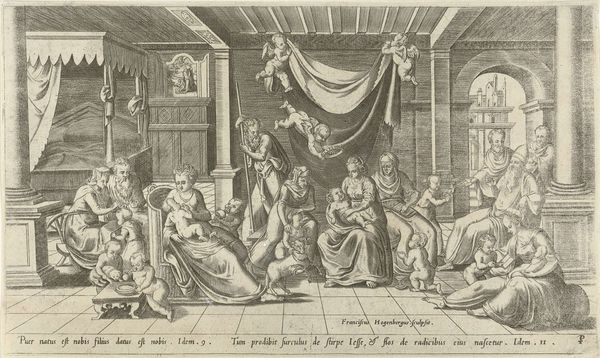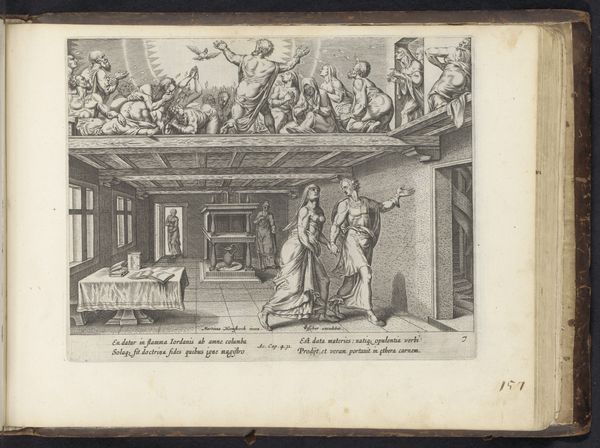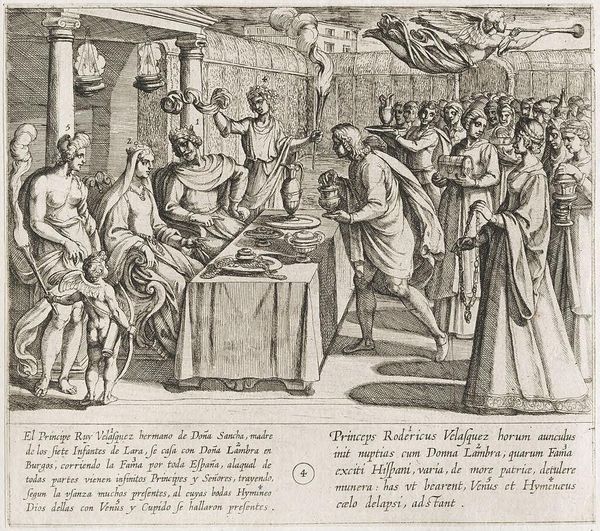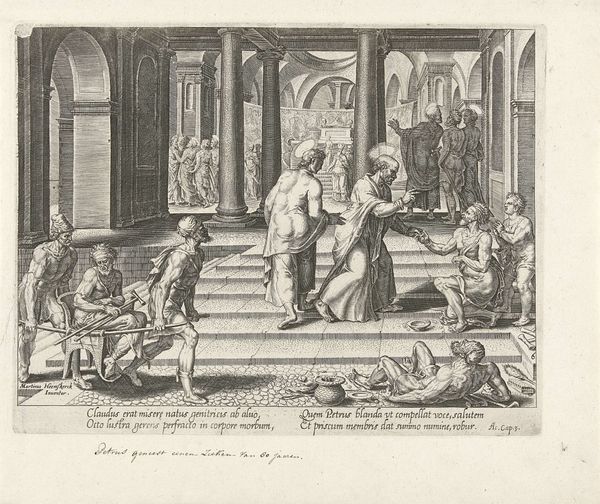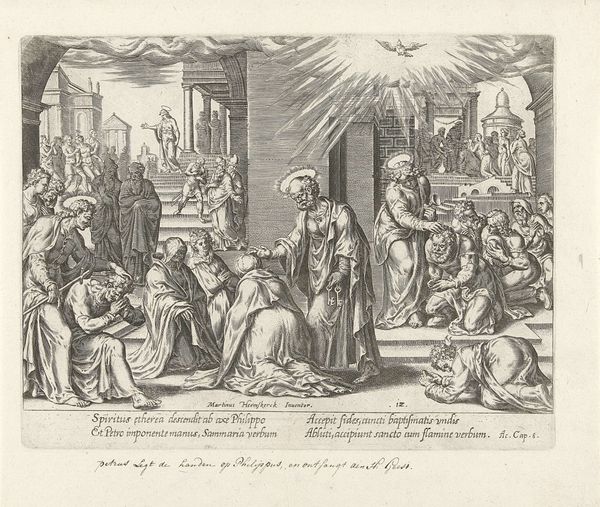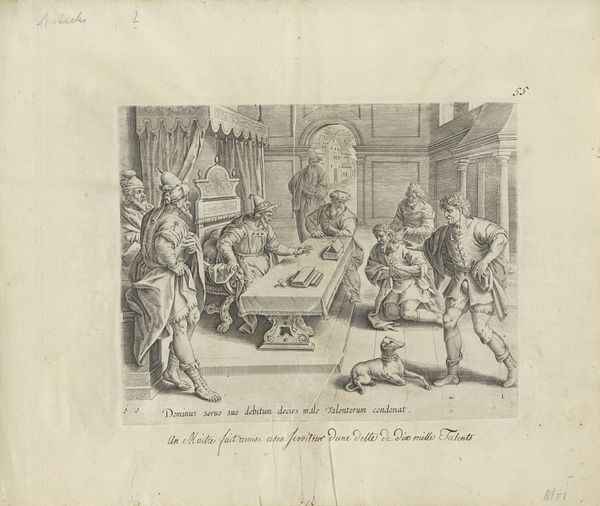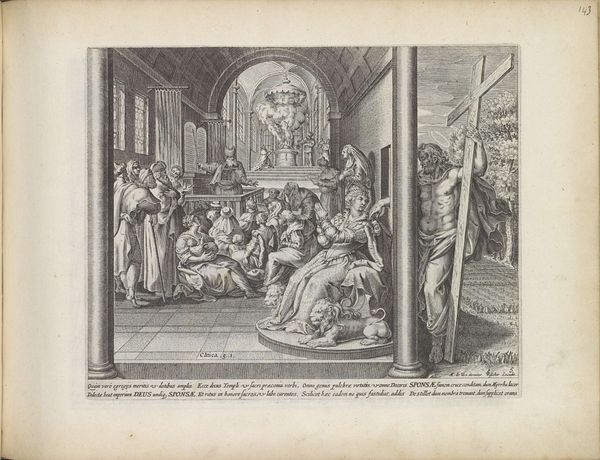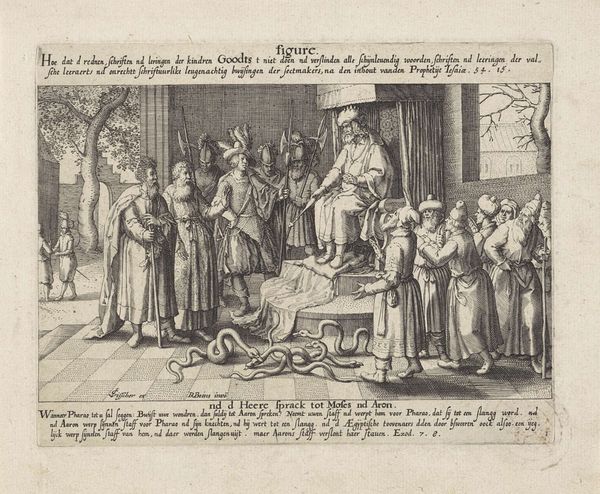
Dimensions: height 213 mm, width 272 mm
Copyright: Rijks Museum: Open Domain
This print, "Uitstorting van de Heilige Geest," was made by Philips Galle sometime before his death in 1612. He worked with metal, using tools to incise lines into a copper plate. The physical labor involved in this process is considerable. The artist applied pressure to the tool to remove slivers of metal, creating grooves that would hold ink. Consider the material properties: the hardness of the copper, the sharpness of the graver. These qualities dictated the artist's technique and the resulting aesthetic. The dense network of lines create a sense of depth and shadow. The printmaking process allowed for the reproduction and wide distribution of images, making it an ideal medium for disseminating religious ideas during the Reformation. Each impression involved repetitive labor. The final product was not considered a precious object. Looking at the image this way, we can appreciate how the material and making processes are deeply intertwined with the social and cultural context of the time.
Comments
No comments
Be the first to comment and join the conversation on the ultimate creative platform.
